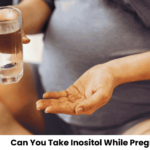Wellness isn’t a destination—it’s a process. Whether you’re healing from a previous injury, managing a chronic condition, or simply building healthier habits, each step forward requires intention, consistency, and self-awareness. But what happens when an unexpected event—like a car accident—suddenly derails all that progress?
A side-impact collision, often known as a T-bone accident, can bring your momentum to a grinding halt. Even a relatively minor crash can jolt your musculoskeletal system, increase inflammation, and reactivate old injuries or emotional stressors. For those deeply engaged in their wellness journey, this kind of disruption can feel both physically and emotionally devastating.
And while immediate injuries might seem manageable, the aftermath often includes delayed symptoms and logistical complications—especially when the question of fault is unclear. In these situations, understanding how liability is determined in side-impact crashes becomes essential. When access to care hinges on legal clarity, healing can’t wait for paperwork to catch up.
When Progress Becomes Pause
The body and mind crave rhythm. Regular movement, sleep, nourishment, and emotional regulation are the pillars of sustainable wellness. When you’re thrown into the chaos of a car accident, all of those pillars are shaken.
Suddenly, you may be dealing with:
- Physical pain or stiffness
- Sleep disruption due to discomfort or stress
- Missed therapy or fitness sessions
- Anxiety or hypervigilance while driving
- Financial pressure from medical or car repair costs
These setbacks can have a compounding effect. What began as a physical disruption can spiral into emotional distress, lost confidence, or a return to unhealthy coping mechanisms. This is especially frustrating for individuals who were making steady gains in their health—perhaps recovering from surgery, building a fitness routine, or overcoming trauma.
How Side-Impact Accidents Target the Body
Side collisions are uniquely disorienting because they strike the body laterally, often with little warning. Unlike front or rear-end impacts, which allow more time for bracing and are mitigated by crumple zones and airbags, T-bone crashes hit the side of the body with less protection.
Common post-collision injuries include:
- Whiplash and neck strain from sideways head movement
- Shoulder, rib, or clavicle injuries from seatbelt pressure
- Thoracic spine misalignment
- Hip and pelvic imbalance
- Myofascial tension and soft tissue trauma
These injuries can disrupt everything from your posture to your ability to exercise. And because muscle trauma often surfaces days or even weeks after the crash, many people return to their routines too soon—only to find that their performance and endurance have declined, or that lingering pain makes movement uncomfortable.
Emotional Setbacks Are Just as Real
Physical pain is only one part of the story. Emotional wellness can take an equally hard hit after an accident. Even if you weren’t seriously injured, the sudden loss of control, the sound of the impact, and the ongoing stress of medical appointments or insurance claims can trigger your nervous system into survival mode.
This emotional response might manifest as:
- Fatigue or mental fog
- Irritability and emotional swings
- Disinterest in previously motivating wellness routines
- Reluctance to drive or go out
- Trouble focusing during meditation or breathwork
If you’ve done work to regulate anxiety, heal from trauma, or build confidence, a car accident can feel like taking several steps back. It’s not uncommon to grieve this regression, especially when you’ve worked so hard to feel “normal” again.
Returning to Wellness, One Layer at a Time
Healing after an accident isn’t about snapping back—it’s about gradually restoring safety, stability, and balance. Rather than forcing yourself to resume your old routine, consider rebuilding your wellness habits from the ground up with compassion.
Here are a few practical ways to approach recovery:
- Get assessed early: Even if you feel okay initially, a physical therapist, chiropractor, or massage therapist can detect subtle alignment or soft tissue issues before they escalate.
- Adapt your routine: Replace high-impact workouts with restorative movement like gentle yoga, somatic stretching, or walking until your body feels more stable.
- Re-establish nervous system regulation: Daily breathwork, grounding exercises, or trauma-informed meditation can help signal safety to your brain and reduce emotional overwhelm.
- Don’t isolate: Talk to your therapist, share your struggles with a support group, or simply let your inner circle know what you’re going through.
- Seek clarity around coverage: If your ability to access care is delayed due to a fault dispute or insurance conflict, take time to understand your rights. This allows you to make informed decisions about care options and timelines.
Integrative Therapies That Support Healing After a Collision
In the weeks and months following a car accident, integrative care can make a world of difference in both physical recovery and emotional stability. The body heals best when its systems—muscular, skeletal, nervous, and immune—are treated together, not in isolation.
Here are a few therapies to explore:
- Massage therapy to release tension, increase circulation, and promote relaxation.
- Acupuncture to address pain and rebalance energy flow disrupted by trauma.
- Chiropractic care to restore joint alignment and relieve nerve pressure.
- Lymphatic drainage to reduce swelling and support detoxification.
- Counseling or somatic therapy to work through fear, grief, or emotional regression triggered by the event.
Each of these modalities addresses a different layer of the healing process. While not every treatment is right for everyone, exploring your options allows you to build a toolkit that supports your unique recovery path.
Progress May Look Different—And That’s Okay
After a car accident, you may not be able to measure progress the same way you did before. Instead of focusing on milestones like running a mile or mastering a new yoga pose, look for subtler signs of healing:
- Waking up with less tension
- Feeling safer behind the wheel
- Reconnecting with your body through touch or breath
- Being able to rest without guilt
- Asking for help when needed
These markers are just as valid—and often more meaningful—than external achievements. They’re signs that your nervous system is beginning to trust again, and that your body is slowly letting go of trauma.
A car accident, especially one involving a sudden side impact, can feel like an unfair interruption in a carefully built life. But disruptions don’t erase your progress—they simply call for a recalibration. The tools you’ve already learned on your wellness journey—listening to your body, being present, managing stress—are the very ones that will guide you forward.
Part of that journey includes understanding the logistics that can influence your healing timeline. If your accident involved a side-impact crash, it helps to know how fault is determined, as it may impact your access to physical therapy, massage, or counseling services.
Above all, remember this: your body has not failed you. It’s doing what it must to protect, adapt, and recover. And with time, care, and support, your wellness path can resume—perhaps deeper and more compassionate than before.
Disclaimer: The content on Wellness Derive is for informational purposes only and not a substitute for professional medical advice, diagnosis, or treatment. Always consult a healthcare provider for medical concerns.



